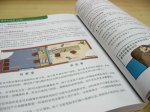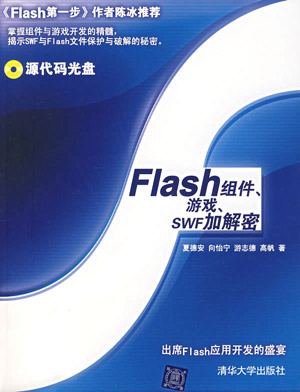
I accepted the invitation of Turing Culture of The People’s Posts and Telecommunications Press in July, 2008 and began to translate the book Designing the Moment: Web Interface Design Concepts in Action for them.
The book is published on 18th April, 2008 by New Riders Press, and the ISBN is 978-0321535085. The author, Robert Hoekman Jr. is an interaction designer and an expert in the area of usability.
After 4 months’ hard work (well, it’s not REALLY hard, since I’m not a hard-working person,putting lots of attention into my rock bands and enjoying the colorful life), I finished the translation. In fact this book is just about 300 pages and the content is not very rich. However, it still give us bunches of worth-learning solutions about the layout, interactions and even the customer service of web applications (it covers a wide range of different issues, such as Search, Screencast, Blog, Wizard, RSS, Rate, Tag Cloud, Form, etc).
Translating a book is actually a process in which you can LEARN. At first glance, there’re not many brand-new theories or conceptions in this book; but Robert is just like a cat hiding his paws, all the solutions of the points (the stories in the book) are shown by long practice. In other words, if you don’t know much about User Experience, just follow his direction and it’ll be OK; if you have done some researches in this field, all the methods and thoughts behind each solution are also worth learning.
Nonetheless, I just could not stop cursing this King of Clauses and awkward humorist (maybe the reason is the gap between Eastern and Western culture) for his writing style which made me difficult to organize texts in Chinese. Also he likes Oriental concept like “Zen,” but I think he can’t play the ball very well. I had to adopt his perspectives and on the other hand I had to rack my brain in trying to mend the leaks.
However this is still a great book and it’s deserved all my recommendation to everybody. Here’s my Translator’s Words for this book (the original is Chinese):
In the past few years, the Internet has been greatly changed with the swift storm of Web 2.0. All the information sites have become little girls from yesterday in some sence, and more and more openness and diversification never seen before have appeared in the contents of Internet which used to be edited or prescribed by a handful of people yesterday. The “read-only Internet” yesterday has become “readable and writable Internet”, and all of us can certainly add contents or contribute our share as we wish. We publish our blogs and view others’ blogs, and we would leave comments if we have something to say. We create tags to create categories and pigeonhole all the articles, which benefits not only ourselves but also the others. We click and check others’ photos, then upload photos of ourselves. We subscribe any interesting stuff by RSS. We use Google just like we’re searching in a enormous library. We use Wikipedia, and we can discuss or improve the article if we have confidence. We’re learning new technologies, enjoying the streaming videos, communicating thoughts about books and movies with each others, and we are making friends no matter he’s from any corner of this planet. This is a unprecedented “Sharing” world.
Yes, unprecedented. As products developers and designers on the platform which no one could have visions just few years ago, which standard or criteria should we adhere to present a perfect answer sheet in the end? You know, the perfect answer sheet means millions page views, excellent public praise and, the most important, better market reward.
I think you’ve already learn that the protagonist of Web 2.0 is the user. Users are the judge of all the websites and web applications (and of course, the source of revenue). If users think the reserves we provide are worthy, they will promote it by lips, they will write the feeling in their blogs, they will become the admiring fans of you like those Apple fans. Users never mark our products with a model answer; they mark on the basis of every experience on every moment when they giving the orders or getting the feedbacks. If they find it no troublesome during the task, then you get “good;” if they can also find happiness from success, or pleasure of operating, then you get “Perfect.”
So the very first sentence of this book is:
A good user experience is all about good moments.
Robert Hoekman, Jr. is an interaction designer and an expert in the area of usability. He used to work for GoDaddy.com, MacroMedia, Adobe, then he founded Miskeeto, and continue to provide excellent services of user experience for the public. His former book, Designing the obvious explained the explicit design methods on how to make softwares simple and easy-to-use, and this time he’ll uncover the secrets of “moments” with this new book Designing the moment.
When users are in our websites or web applications, it consists of a series of moments. No matter learning new features, logging in, leaving comments, rating, or searching infromations, filling forms, subscribing RSS, even when they are cancling and deleting their accounts with the decision of never come back, all the moment are covered byover 30 stories Robert created with his own personal experience. Every moment is a story; at the end of every story there will be a appropriate solution. Robert will not preach us all the great truths, he will give us the most simple and direct presents – if you don’t know much about User Experience, just follow his direction and it’ll be OK; if you have done some researches in this field, all the methods and thoughts behind each solution are also worth learning.
And, we’re glad to see that he will not beautify himself deliberately. He will show us the whole process including all the exploring and improving after failures, even including how to “steal” other excellent designs. Well, in the first place, the most famous design master will also make mistakes. In the second place, we can learn which is “borrowing good ideas” and which is “plagiarizing shamelessly”. The most important, this book tells us how to find shortages of a design and how to constantly improve it all the time.
Thanks a lot for the invitation of Turing Culture. The process of translating is also a process of learning. I have modified and improved some projects since I learned something useful from it. In the mean time, the copious references of Robert have expanded my horizons, which gives me chances to know something unfamiliar but interesting. So I really hope you guys could read it and I believe that you will find yourself have already raised to a new level after finish the last page of this book.
Mess in Beijing, November, 2008







